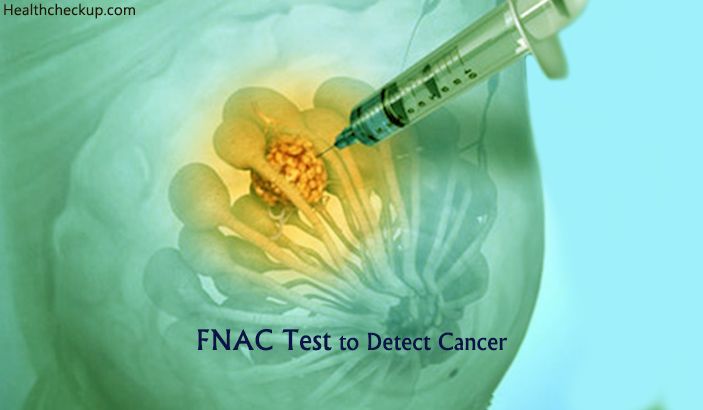On discovery of a lump and tissue abnormalities in your body superficial areas, Fine Needle Aspiration Cytology is needed to test for cancer. Your doctor needs to carry out the fine needle aspiration procedure to determine if the lump is cancerous. The procedure is helpful in determining the extent of the cancer cells spread.
Can FNAC Detect Cancer?
When an FNAC procedure is done, cancerous cells are detected early. This helps you to get the early treatment options. Fine Needle Aspiration Cytology for cancer is moderately painful and uncomfortable. You do not require anesthetic treatment.
Role of Fine Needle Aspiration Cytology
Fine Needle Aspiration Cytology is a very vital procedure in the diagnosis of cancer. It is a great way to investigate swellings, tumours and swollen lymph nodes. In cancer diagnosis and treatment, FNAC gives you a better chance of recovery especially when the FNAC test is carried out in the early stages of the disease.
An often overlooked and underemphasized use of FNAC in medicine is its role in investigating cytological changes. Needle aspiration is safer and less traumatic than biopsy based on surgical methods. Today, it is the most used and recommended procedure for the accurate diagnosis of cancer and conditions caused by inflammation.
FNAC Tests For Cancer
While the FNAC test can be used to detect cancer in nearly all body organs and tissues, there are a number of common FNAC tests for cancer. Here are the most requested diagnostic and confirmatory tests by doctors.
FNAC For Breast Cancer
An FNAC biopsy will be recommended by your doctor on the realization of breast cancer possibilities on other tests carried out. An adequate amount of tissue will be taken from the area that is in question. A laboratory test is then done to ensure that the suspicious cells are cancerous.
FNAC For Liver Cancer
A Fine Needle Aspiration Cytology test for liver cancer is performed with the aid of an ultrasound. To detect that there is liver cancer, the specimen is observed through a microscope.
FNAC For Lung Cancer
In FNAC testing for lung cancer, sputum specimen is required. The sputum is them examined for abnormal cells. A microscope is used in this examination.
FNAC For Throat Cancer
After presenting viable symptoms, examination of the inside of your throat may lead your doctor to request conclusive diagnostic testing. One of the methods of diagnosing throat cancer is using FNAC. It is applied when the doctor would like to have a tissue sample from your throat or the lymph nodes around it.
Other Common FNAC Tests For Cancer
In medical practice, there is also the FNAC test for ovarian cancer. FNAC test ovarian cancer frequently to detect the disease in its early stages.
Another common application of the test is FNAC in head and neck cancer diagnosis. FNAC in head and neck cancer is an effective diagnosis and has got few limitations. Sensitivity and specificity determine the cells’ cancerous state.
Is FNAC Spread Cancer?
Many people ask themselves if FNAC test spread cancer. If the fine needle is carried out by a specialist, the risk of its spread is very minimal.
FNAC For Cancer Preparation
Preparing for your FNAC for cancer is not an elaborate process. This is because the FNAC testing procedure is simple, rather painless and quick. It is done in a laboratory setting on an outpatient basis.
Often you will be asked to
- Not use aspirin or any other anti inflammatory medications that are non-steroidal in nature.
- Undergo blood tests at least two weeks prior to the procedure.
- Not have food in the few hours preceding the FNAC procedure.
- Not be on any medication that includes blood anticoagulants.
- Your vital signs will be taken before you are started on the procedure.
Afford the attending Cytopathologist and his assistant(s) outmost cooperation during the test any other procedures. Within 48 hours of undergoing the FNAC test for cancer procedure, the results will be on your doctor’s desk.
For the Cytopathologist, an adequate specimen must be collected. The specialist will have made all necessary preparations on his end before starting the FNAC procedure.
FNAC Test Procedure
Fine Needle Aspiration is performed on lumps that your doctor can feel (palpable lumps) or lumps that are impalpable. The skin is cleaned on the suspicious area. Your doctor then examines the lump. This is done by your doctor so as to determine if the lump is felt or there is need to perform an ultrasound. The lump is palpated to a position ready for the needle insertion. For unfelt lumps, your doctor performs imaging tests to locate the exact position of abnormal tissue.
Use of an ultrasound image is highly recommended. On an ultrasound monitor, the doctor watches the area suspicious and guides the needle to the position. For the breast, a mammogram is done. Two mammograms are placed in different angles and then exact coordinates are achieved.
Fine Needle Aspiration Biopsy uses a hollow and thin needle. The needle is inserted on the area in question. Negative pressure is exerted in the needle and with the motion of insertion, the specimen is taken. The sensation on insertion is more similar to that of the blood test. A number of insertions are done to get an adequate sample.
When the procedure is completed, your doctor places a bandage over the operated area. This procedure comes along with minimal complications. You can resume your normal daily activities after the procedure is done.
In rare cases where bleeding may result, your doctor will advise you on what to do. You might also experience swelling. Report any issues to your doctor and they will be attended to with the seriousness they deserve.
FNAC Test Results And Interpretation
The FNAC test is great at determining if your tumor or swelling is benign or malignant. A result of malignant or benign cells is considered abnormal in cell growth but with a benign tumor, there is less reason to worry.
Talk to your medical care provider about the results of your FNAC test. Ask them questions for you to gain an understanding of the results and your condition. Your questions should focus on the prognosis, treatment, medications and any complications that could arise. If any follow-up procedures are to be undertaken, they should be explained to you as you get your results.
Results of FNAC Test for cancer are available within 24 hours to a week after you have taken the test. As you wait for the results, you might get worried. Talk to relatives or friends about your feeling.
Medically Reviewed By

Professionally, a trained Microbiologist and Plant operator, Eustace is an experienced health content writer who is passionate about helping people lead a healthy life.








